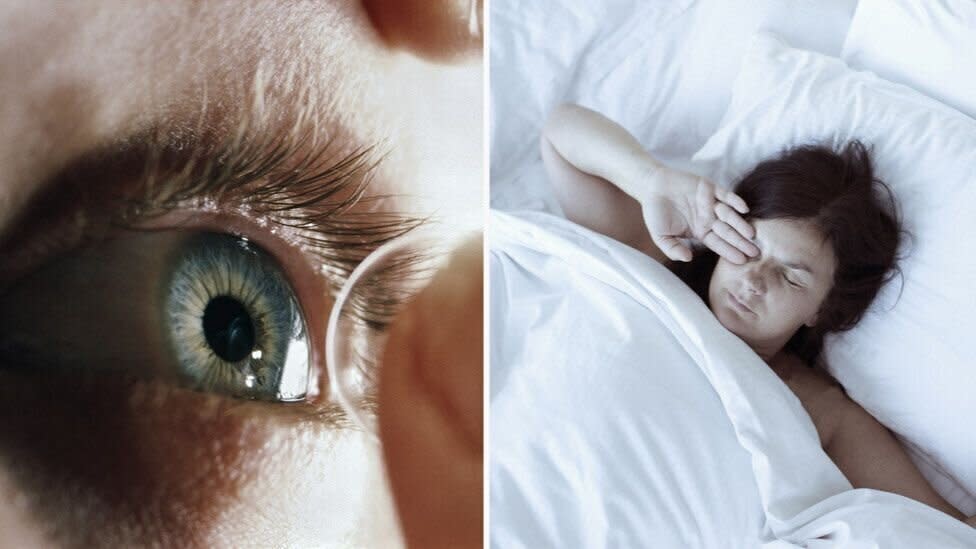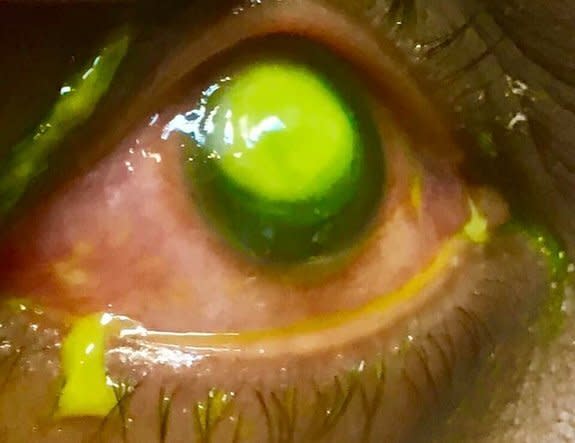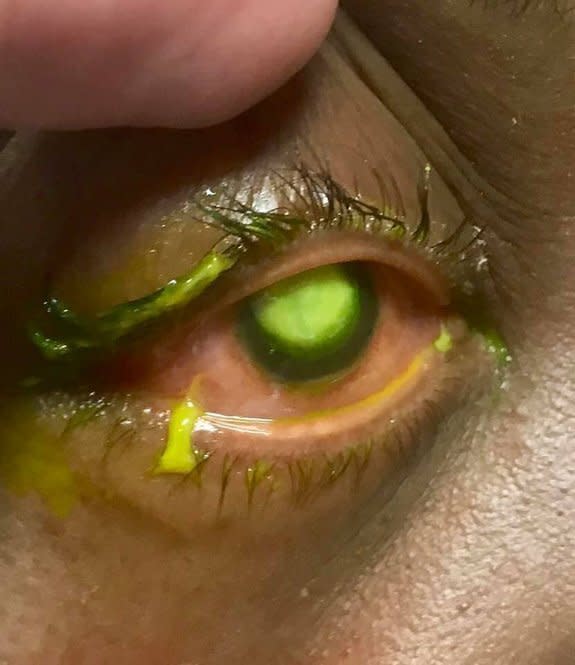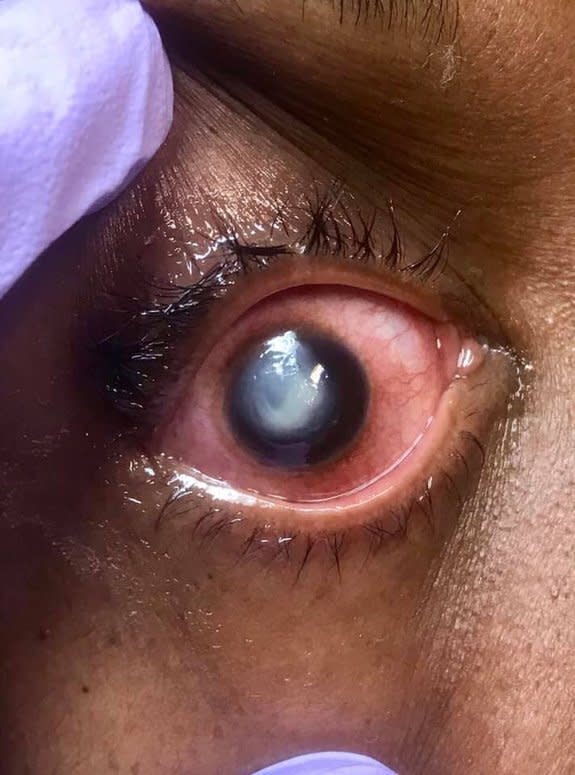Stomach-churning photos show the dangers of sleeping in contact lenses

WARNING - GRAPHIC IMAGES: An eye doctor who was sick of encountering patients that sleep with their contacts in has taken stomach-churning measures to warn people about the dangers.
Dr Patrick Vollmer of Vita Eye Clinic in Shelby, North Carolina, shared graphic photos of a bright-green eye that was being rapidly consumed by bacteria.
He explained that an ulcer had formed in the cornea as a “direct result of sleeping [with] contact lenses” still in.
While the fluorescent green colour in the eye was a result of dye, Dr Vollmer said the places where it had pooled showed the extent to which the cornea had been taken over by an ulcer.
“This case did not take ‘years’ to form. In fact, it took about 36 hours, as is characteristic of this strain of bacteria,” he said.
“I don’t ever recommend sleeping in any brand of soft contact lenses. The risks outweigh the benefits every time.

“It takes seconds to remove your contacts but a potential lifetime of irreversible damage if you choose to leave them in. People need to see these images and remind themselves/family/friends to also be aware of contact lens misuse...
“Don't sleep in soft contact lenses.”
The condition, called cultured pseudomonas ulcer can quickly lead to blindness, and despite the antibiotics and steroids he had treated the cornea with, the patient was still likely to have permanent scarring and vision loss, he said.

The graphic photos quickly went viral on social media, and within three days of the post it had been seen by more than 30 million people.
Some comments which accused the post of trying to “scare” people were met with the response from the clinic: “Yes, this post is a ‘scare tactic’… to get you to stop sleeping in soft contacts”.
According Optometry Australia, soft contact lenses are the most commonly prescribed type of contact lenses, but the thin, lightweight plastic were making people complacent.

Contact lenses should not be worn at night because they prevent oxygen getting to the front of the eyeball and can cause damage if worn for too long, as was the case with Dr Vollmer’s patient.
"A very common thing we see in private practice is someone gets home late ... they're meant to throw their lenses out but they just fall asleep instead," Optometry Australia president Andrew Hogan told ABC Radio Hobart.
"They get up in the morning and without thinking too much they put a fresh pair of lenses on top of the ones they're already wearing."


